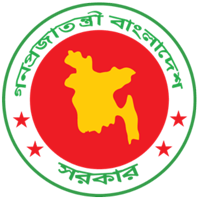Protected by Routine Vaccination: How the Government Upheld Immunisation System During the Floods in Eastern Bangladesh
When flash floods engulfed parts of eastern Bangladesh earlier this year, families like Sharmin’s found themselves stranded for weeks. Yet, amid the devastation, a quiet but critical success story emerged—one driven by Bangladesh’s robust immunisation system. While floods have historically brought waves of diseases such as pneumonia and measles, children in these affected regions were largely shielded, thanks to the power of vaccines.
According to the World Health Organization (WHO) and UNICEF immunisation data for 2023, Bangladesh’s coverage of essential vaccines has reached remarkable heights. Coverage for the third dose of the DPT (diphtheria, tetanus, and pertussis) vaccine—a key indicator of immunisation success—stands at an impressive 98%. Similarly, 97% of children receive their first measles vaccine dose, while 99% are fully protected with three doses of the pneumococcal conjugate vaccine (PCV) by the age of 15 months.
These achievements have tangible impacts during disasters. Dr. Ahammed Kabir, Civil Surgeon of Lakshmipur district, highlighted the protective role of vaccines: “Though usually children are affected by different outbreaks of diseases including pneumonia and measles in flood-hit areas, such thing didn’t happen in my district. One of the major reasons behind the protection of children is routine immunisation.”
Bangladesh’s geographical vulnerability makes it a frontline nation for climate-linked crises. With rising rainfall intensity and frequency, floods are becoming more severe. Yet, even as families were displaced and health systems faced disruptions, immunisation activities continued.
The Directorate General of Health Services (DGHS) adapted swiftly to the crisis, ensuring children received follow-up vaccines. Temporary health camps were established at flood shelters, and health workers, such as Family Welfare Visitor Modhumita Paul, provided essential services wherever possible. “Those who could reach the health centre received services. For others, we worked extra to bring vaccines to them,” she shared.
This resilience is critical for Bangladesh’s efforts to ensure no child is left behind. Through special immunisation drives, health teams ensured children like Umme Zainab—whose vaccination schedule was disrupted—were quickly caught up once conditions allowed.
The country’s commitment to equitable immunisation, spearheaded by initiatives like the Country Learning Hub (CLH)-Bangladesh, focuses on reaching zero-dose (ZD) and under-immunised (UI) children in even the most challenging settings. Vaccines like BCG, pentavalent, and PCV are at the heart of these efforts, protecting children from preventable diseases and giving them a healthier start in life.
Vaccination expert Dr. Tajul Islam A. Bari praised these efforts, noting, “Routine immunisation has played a vital role in protecting flood-affected children from diseases like pneumonia and measles.”
Bangladesh’s immunisation success during the floods underscores the strength of its Expanded Programme on Immunisation (EPI). By maintaining high vaccine coverage and ensuring rapid recovery in disrupted areas, the country is setting an example for tackling health challenges in the face of climate change.
For children like Umme Zainab and millions across the country, vaccines represent not just a shield against disease but also a promise of safety and health, even in the most uncertain times. With its focus on immunisation equity, Bangladesh is steadily moving closer to its goal of a healthier, more resilient future for every child.
Reference
Al Amin M. Marooned by flash floods, children in eastern Bangladesh kept safe by vaccines [Internet]. Gavi.org. 2024 [cited 2024 Dec 5]. Available from: https://www.gavi.org/vaccineswork/marooned-flash-floods-kids-eastern-bangladesh-kept-safe-vaccines









